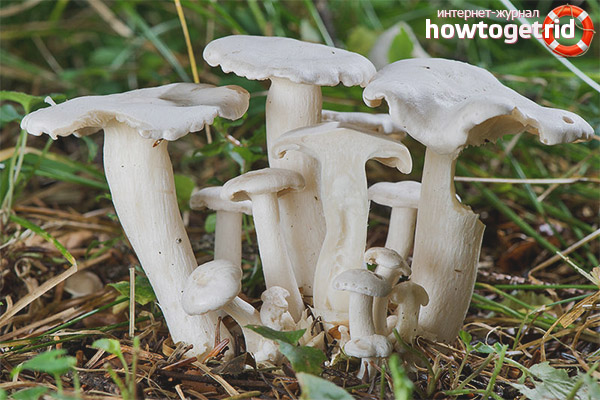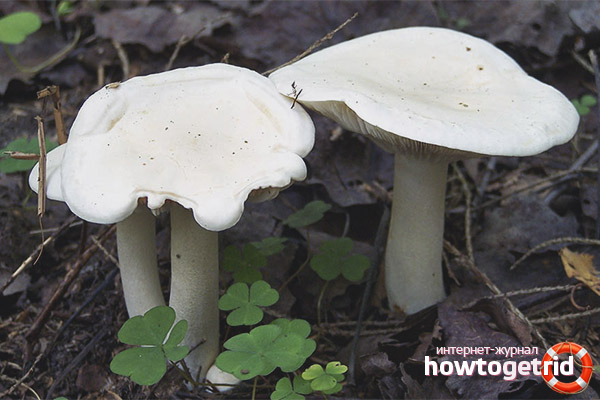The content of the article
In this article, you will learn everything to the smallest detail about the inedible rowing of white. What does this mushroom look like, where is it common, what time is it better to collect, and is it worth eating.
When you wander through the woods in search of edible mushrooms, you can often come across several dozen of these specimens. An experienced mushroom picker will immediately miss this place, take a deep breath, regret a hundred times that these are not the mushrooms that he needs, and will go further. But a beginner in this matter may well throw a few things home in his basket for conservation. Only now having arrived home, he will be very disappointed. Why? Read on in the article.
If you look from the point of science, the mushroom Ryadovka white (in Latin Tricholoma album) belongs to the rank and file family, to the genus Ryadovka or Tricholoma. This name is due to the fact that groups of fungi (namely, their mycelium) does not grow in different directions. Like, for example, a white mushroom, creating a circle. But only in a row, forming a kind of path. Also in the field of mycology, there is no consensus on which category this specimen belongs to. But in the territory of the CIS countries, white row is considered to be a poisonous mushroom. This late autumn look, as a rule, it appears in the second half of September.
Features
Let's go through its external features first.
- The height of the fungus is small, only 5-10 centimeters, and its thickness reaches up to 1-2 centimeters. The leg is white in color, although with age it becomes close to yellowish. Closer to the base, its width increases, and the outer part is covered with friable coating. Inside is very fibrous.
- The hat is white with a shade of gray. But when the mushroom grows old, it becomes covered with yellow spots with dark dots like grains. Also, in old mushrooms, the disk is often cracked or wavy, while in young mushrooms, on the contrary, it is rounded inward. Over time, the top of the fungus gradually levels out until it becomes flat. The diameter of the circle reaches up to 10 centimeters. The hat is not wet by touch, but opaque.
- The inner plates are thick and fairly thick. Pass from the edges of the cap to the junction with the leg, while their length can vary greatly. Themselves are cream-colored, and the spore powder is white.
- The pulp of the mushroom is quite dense and moderately soft, with lots of fibers.
- The core is filled, there is no characteristic channel in the center of the leg.
Also, the mushroom is distinguished by its pungent smell, reminiscent of radish or dust. For all of the above properties, inexperienced mushroom pickers often confuse this mushroom with mushrooms or other edible types of rowing. But the main differences between them are: the smell (it is pleasant in the champignon), the rowing plates do not get a grayish tint, and the most important and obvious is the presence of a skirt on the leg or under the hat (the rowing has no such feature).
Where are such mushrooms found

Often, white rowan grows exclusively in coniferous forests. After all, only there is a high acidity of the soil. Occasionally, it can be found in deciduous and mixed greenery, near birches or beech trees. It is characteristic of the Primorsky Territory and the western part of Russia. Often this species grows in rows in rows in thickets and forest stands. Peak growth of Ryadovka white falls at the beginning of July and runs through the end of October.
Fungus poison
To summarize, we can say that the white row is a “decorative” mushroom. It cannot be cooked in any way. And such an instance accidentally falling into the basket can give the food an “unforgettable” taste in the future, and not rarely afterwards an upset stomach. Therefore, be careful and collect only those mushrooms in which they are 100% sure!
Video: White Ordinary (Tricholoma album)










Submit